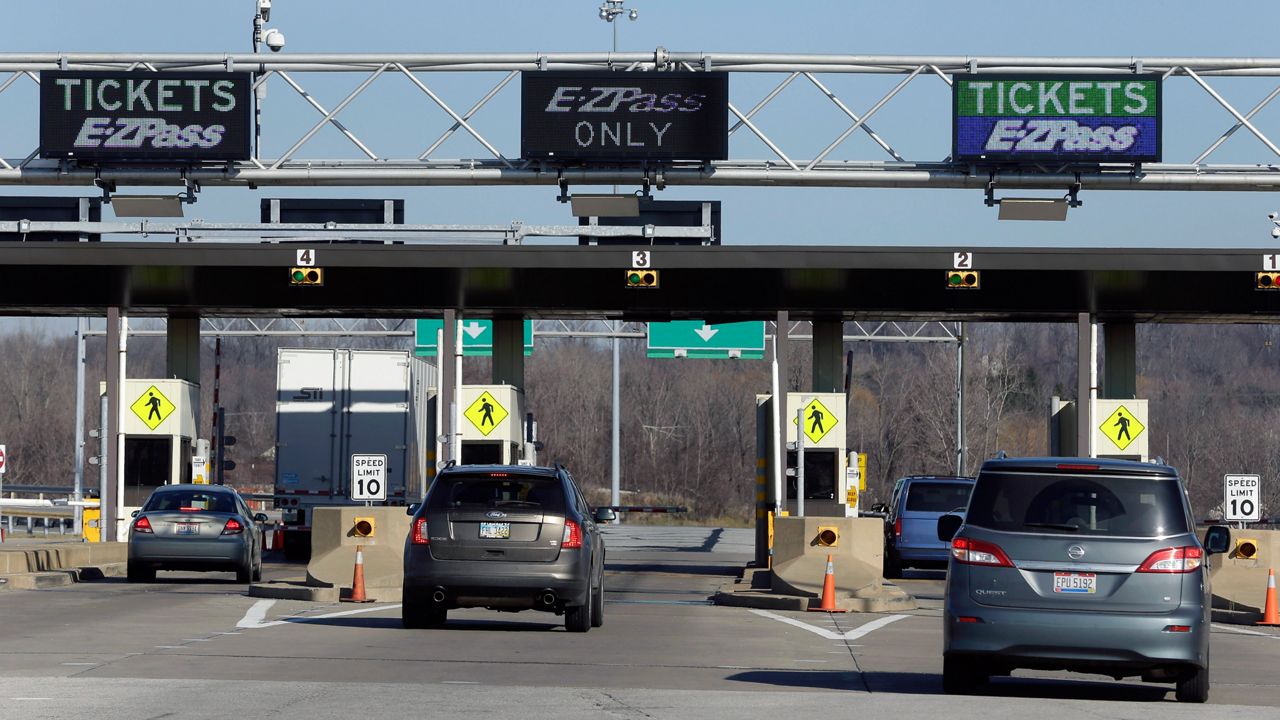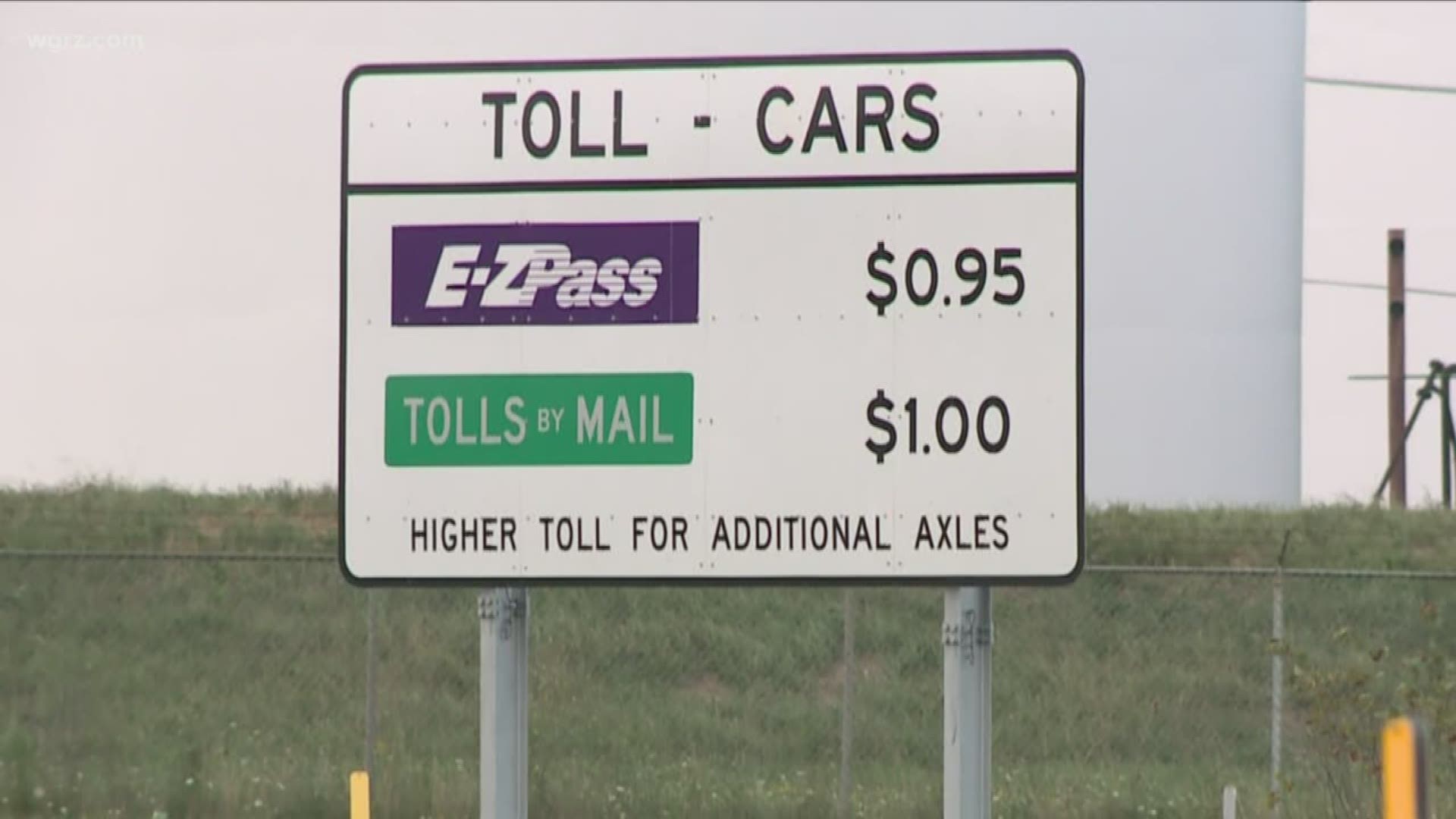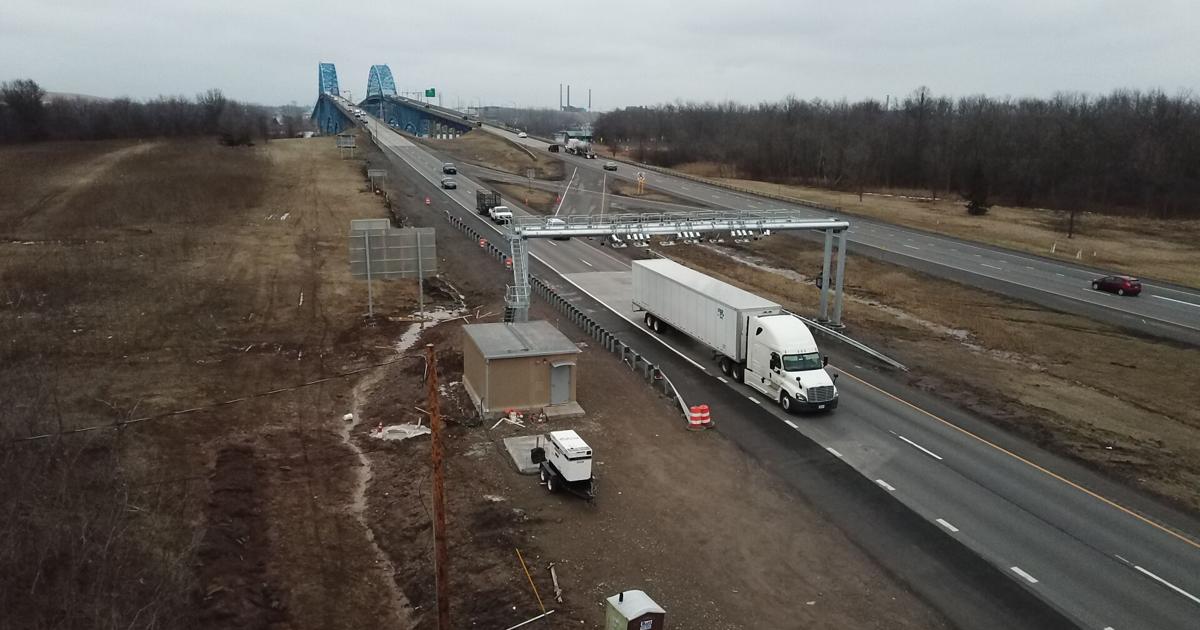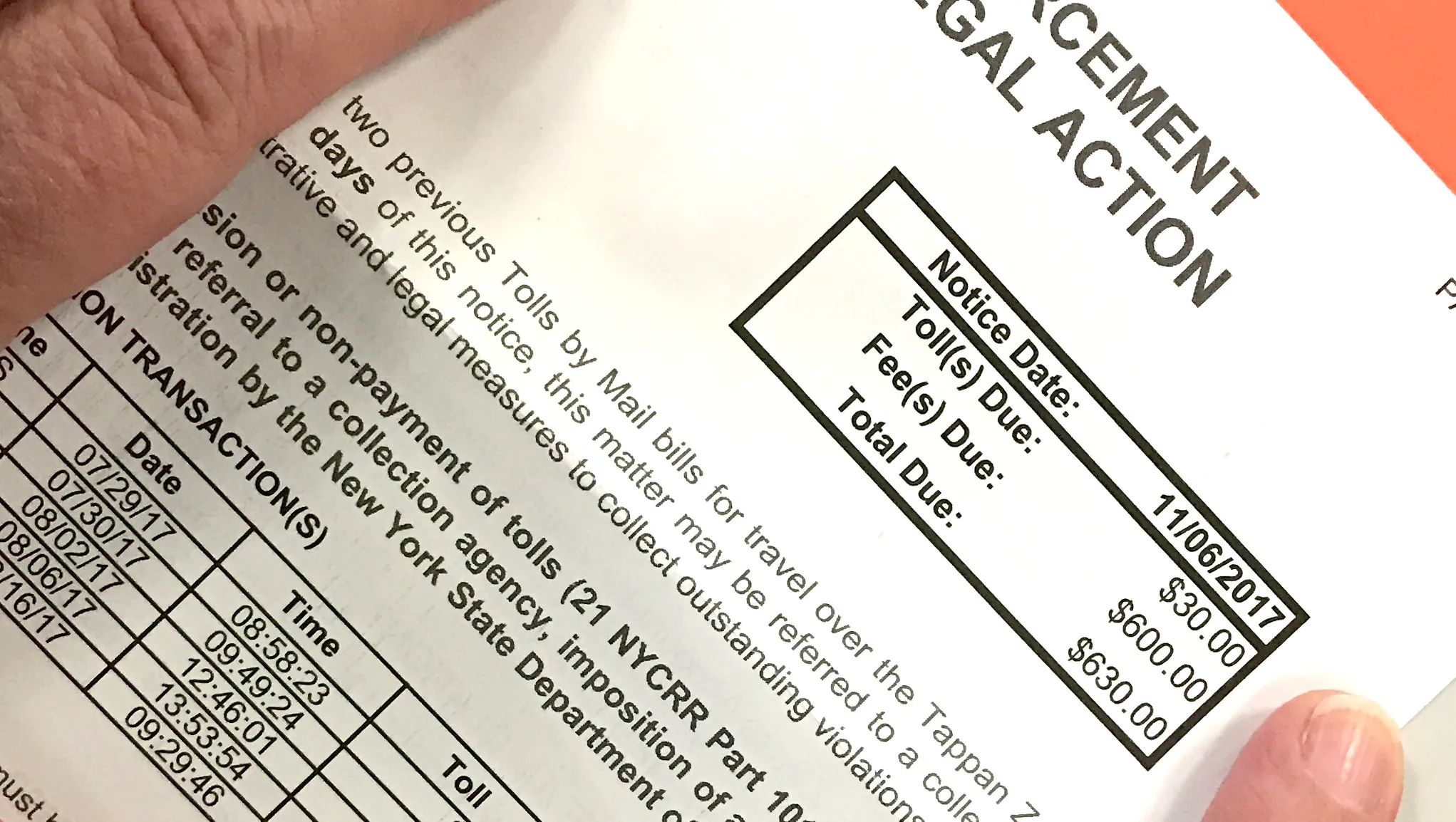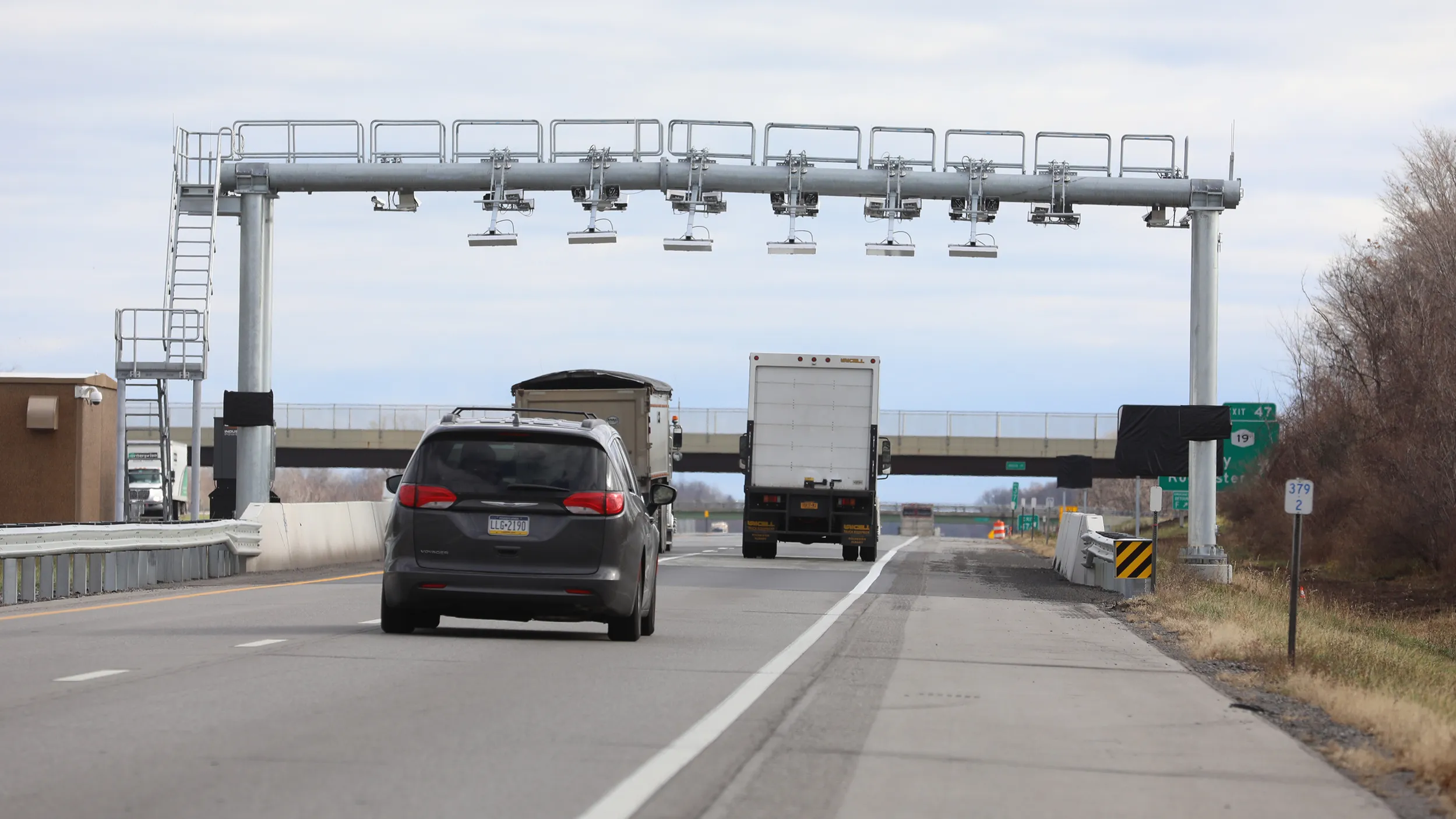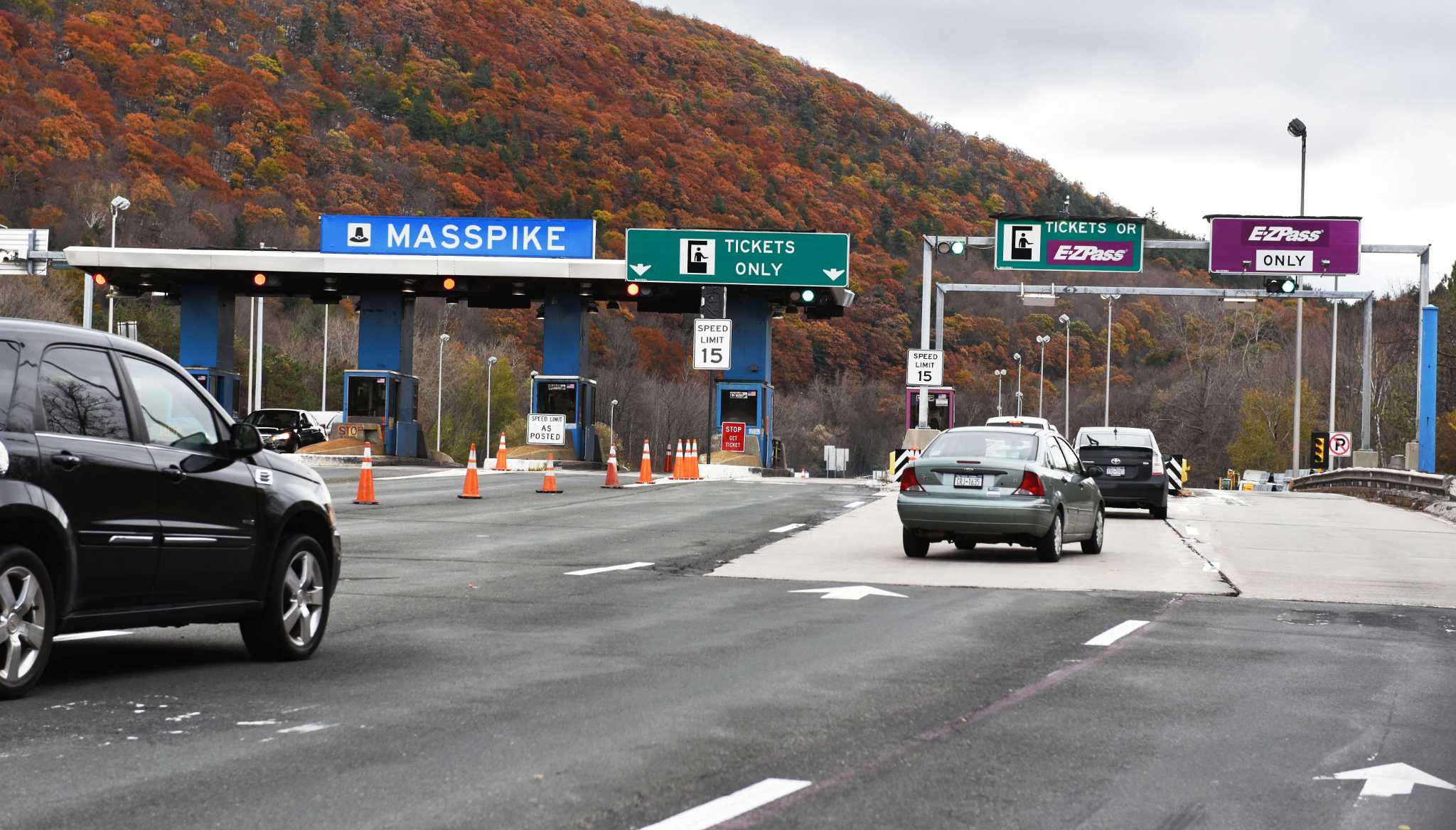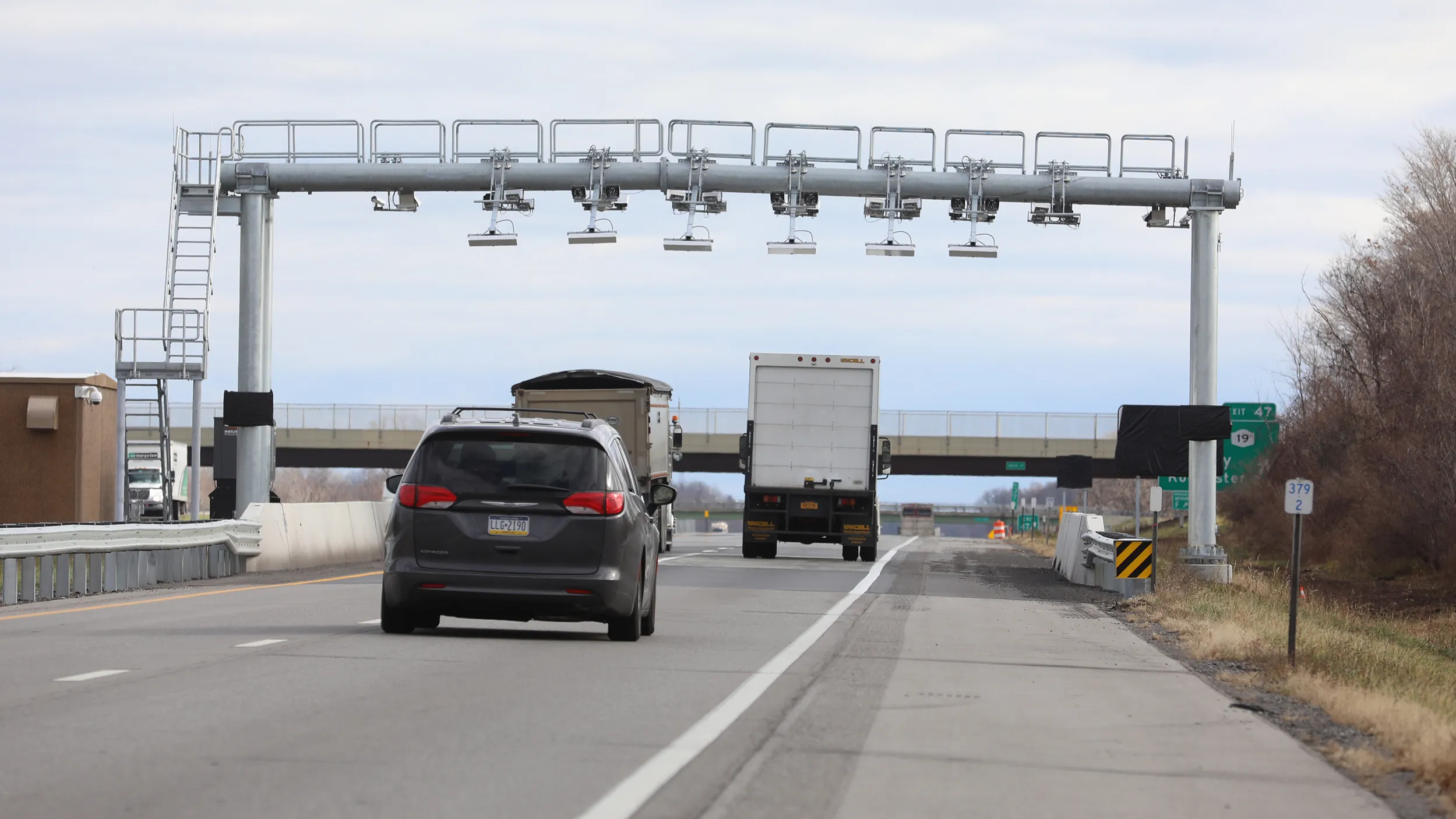Introduction
Cashless tolls have become increasingly popular in recent years, revolutionizing the way we pay for tolls on highways and bridges. Gone are the days of scrambling for loose change or waiting in long lines to hand over cash to a toll booth operator. With the advent of electronic toll collection systems, drivers can now breeze through toll plazas without having to stop.
Simply put, cashless tolls are a seamless and convenient way to pay for road usage. By utilizing technology, tolling authorities are able to streamline the toll collection process, improving traffic flow and reducing congestion on our roads. With the implementation of cashless tolling, drivers no longer need to worry about fumbling for exact change or encountering delays at toll booths.
In this article, we will explore how cashless tolls work, delve into the different electronic toll collection systems, discuss the benefits and potential drawbacks, as well as answer common questions about this innovative payment method.
So, fasten your seatbelt and get ready to embark on a journey to discover the inner workings of cashless tolls and how they have transformed the way we travel on toll roads and bridges.
What are Cashless Tolls?
Cashless tolls, also known as electronic toll collection (ETC), are payment systems that allow drivers to pay for tolls electronically without the need for physical currency or manual interaction. Instead of stopping at toll booths to pay with cash or a card, vehicles equipped with ETC technology can pass through designated tolling points at normal driving speeds, with the toll being automatically deducted from a prepaid account linked to the vehicle.
One of the main features of cashless tolls is the elimination of the traditional toll booths and toll collectors. This not only saves drivers time, but also reduces traffic congestion at toll plazas, leading to smoother traffic flow on highways and bridges.
Electronic toll collection systems rely on a combination of technology, infrastructure, and communication to effectively process toll payments. These systems typically consist of electronic toll collection devices, gantries or overhead structures equipped with sensors, and a backend system that manages the transactions and accounts.
With the rise of cashless tolls, tolling authorities have been able to introduce various innovations to enhance the overall tolling experience. This includes the ability to use transponders, stickers, or license plate recognition (LPR) technology to identify vehicles and link them to the appropriate account for toll payment.
Overall, cashless tolls provide a convenient and efficient way for drivers to pay for tolls, reducing the need for cash and minimizing the amount of time spent at toll plazas. With the advancement of technology, tolling systems continue to evolve, offering more seamless and integrated solutions for road users.
How do Cashless Tolls Work?
Cashless tolls operate through a combination of electronic toll collection systems and automated processes. Here’s a step-by-step breakdown of how cashless tolls work:
- Vehicle Registration: Drivers who wish to use cashless tolls typically need to register their vehicles with the tolling authority. This involves providing vehicle information such as license plate number, make, and model, as well as contact details and payment method.
- Account Setup: Once registered, drivers need to set up a prepaid toll account with the tolling authority. This can usually be done online or through a customer service center. The account is linked to the vehicle and serves as the means of payment for tolls.
- Tolling Infrastructure: On the roads, tolling authorities install gantries or overhead structures equipped with sensors and cameras. These are strategically placed at specific locations to detect vehicles and capture their information as they pass through.
- Transponders or Stickers: To facilitate the electronic toll collection process, drivers are often provided with transponders or stickers. These devices are affixed to the windshield or license plate of the vehicle and contain a unique identifier. When the vehicle approaches a cashless tolling point, the sensors on the gantry pick up the transponder signal or capture the license plate image for recognition.
- Toll Deduction: Once the vehicle is successfully identified, the tolling system accesses the corresponding prepaid account and deducts the appropriate toll amount. This transaction is processed in real-time or near real-time, ensuring a seamless and efficient payment process.
- Transaction Confirmation: Upon successful deduction of the toll, drivers usually receive a transaction confirmation via email or through a mobile app. This provides them with a record of the toll payment and keeps them informed about their account balance.
It is important for drivers to ensure that their prepaid toll accounts have sufficient funds to cover the toll charges. This can be done by periodically topping up the account or enabling auto-recharge options offered by the tolling authority.
In scenarios where a driver does not have a transponder or sticker, tolling authorities rely on license plate recognition (LPR) technology to capture the vehicle’s information and match it to the registered account. In such cases, the toll amount is still deducted from the driver’s prepaid account.
Overall, with the seamless integration of technology and infrastructure, cashless tolls provide a convenient and efficient way for drivers to pay for tolls without the need for physical currency or manual interaction.
Electronic Toll Collection Systems
Electronic toll collection (ETC) systems are at the heart of cashless tolls, enabling the seamless processing of toll payments through automated means. These systems make use of advanced technology and infrastructure to accurately identify vehicles, deduct toll amounts, and manage the overall tolling process. Here are some key components and features of electronic toll collection systems:
- Transponders: Transponders are small devices that communicate with the tolling infrastructure. They are typically affixed to the windshield of a vehicle or placed in a specific location inside the vehicle. Transponders use radio frequency identification (RFID) technology to transmit a unique identifier to the tolling system when passing through a tolling point. This allows for quick and accurate identification of the vehicle and deduction of the toll amount.
- Stickers: Stickers are an alternative to transponders and are typically applied to the windshield or license plate. They contain a unique barcode or identification number that can be scanned by the tolling infrastructure. Stickers are commonly used for lower-speed tolling applications such as parking lots or residential areas.
- License Plate Recognition (LPR) Systems: In situations where a vehicle does not have a transponder or sticker, electronic toll collection systems utilize LPR technology. This involves using cameras and optical character recognition (OCR) algorithms to capture and interpret the vehicle’s license plate. The license plate information is then matched to the registered account, allowing for toll deduction without the need for additional hardware on the vehicle.
- Gantries and Sensors: Cashless tolling relies on the installation of gantries equipped with sensors and cameras over the roadway. These gantries are strategically placed at tolling points, allowing them to detect vehicles, capture transponder signals, or record license plate images for identification purposes. The sensors and cameras ensure accurate and reliable data collection for toll calculation and account management.
- Backend Systems: Behind the scenes, electronic toll collection systems are supported by sophisticated backend infrastructure. This includes servers, databases, and software applications that process toll transactions, manage customer accounts, and facilitate secure payment processing. Backend systems handle tasks such as toll calculation, account maintenance, reconciliation, and customer support.
Electronic toll collection systems have evolved significantly over the years, incorporating advanced technologies to enhance accuracy, speed, and reliability. These systems have not only revolutionized the tolling industry but have also led to improved traffic flow, reduced congestion, and a more convenient experience for drivers.
Types of Electronic Toll Collectors
Electronic toll collection (ETC) systems utilize different types of toll collectors to facilitate the seamless processing of toll payments. These collectors are designed to suit various types of vehicles and tolling scenarios. Here are the common types of electronic toll collectors:
- Transponders: Transponders are small devices that are typically attached to the windshield or placed inside the vehicle. They communicate with the tolling infrastructure using radio frequency identification (RFID) technology. Transponders emit a unique identifier that is associated with the vehicle’s registered account, allowing for swift and accurate toll deduction when passing through tolling points. Transponders are widely used in traditional tolling scenarios, such as highways and bridges.
- Stickers: Stickers are a type of electronic toll collector that is affixed to the windshield or license plate of a vehicle. They usually contain a barcode or unique identification number that can be scanned by the tolling infrastructure. Stickers are commonly used in applications where low-speed tolling is required, such as parking lots or residential areas.
- Automatic License Plate Recognition (ALPR) Systems: ALPR systems are used when a vehicle does not have a transponder or sticker. These systems rely on cameras and optical character recognition (OCR) algorithms to capture and interpret the license plate of the vehicle as it passes through a tolling point. The license plate information is then matched to the registered account for toll deduction. ALPR systems are particularly useful in situations where vehicles are not required to stop or slow down, such as express lanes or high-speed tolling.
- Mobile Apps: With the rise of smartphone technology, many tolling authorities have developed mobile applications that serve as electronic toll collectors. These apps utilize the built-in GPS and communication capabilities of smartphones to track vehicle movement and calculate tolls based on the route taken. Payments are linked to the user’s account or credit card, providing a convenient and portable solution for toll payments. Mobile apps are especially beneficial for occasional toll road users or those who prefer not to install physical transponders or stickers.
The type of electronic toll collector used may vary depending on the specific tolling authority and the infrastructure in place. Some tolling systems utilize a combination of transponders, stickers, and ALPR systems to accommodate different types of vehicles and ensure smooth toll collection for all drivers.
Overall, the use of these electronic toll collectors has revolutionized the tolling industry, making toll payments more convenient, efficient, and seamless for drivers across various tolling scenarios.
The Benefits of Cashless Tolls
Cashless tolls offer a wide range of benefits for both drivers and tolling authorities. Here are some of the key advantages of cashless tolling:
- Convenience and Time-Saving: Cashless tolls eliminate the need for drivers to stop and physically pay with cash or card at toll booths. This saves time and reduces traffic congestion, allowing for smoother traffic flow on highways and bridges. Drivers can simply drive through designated tolling points at normal speeds without any interruption.
- Enhanced Safety: Traditional toll booths can pose safety risks, such as accidents caused by sudden stops or unsafe maneuvers. With cashless tolls, the risk of collisions is significantly reduced as drivers can maintain a continuous flow of traffic throughout their journey. This also minimizes the chances of rear-end collisions, which often occur when drivers slow down or come to an abrupt stop at toll plazas.
- Improved Air Quality: Cashless tolls contribute to a cleaner environment by reducing vehicle emissions. With smoother traffic flow and a decrease in idling time at toll plazas, there is a reduction in air pollution caused by vehicles waiting in line to pay tolls. This has a positive impact on air quality and helps in creating a healthier and more sustainable environment.
- Cost Savings: Cashless tolling can lead to cost savings for both tolling authorities and drivers. Tolling authorities save money by eliminating the need for toll booth infrastructure and reducing manpower required to collect and manage cash payments. For drivers, cashless tolls can result in fuel savings due to the elimination of the need to slow down or stop at toll booths. Additionally, some tolling authorities offer discounts or reduced toll rates for drivers using electronic toll collection systems.
- Increased Efficiency: Electronic toll collection systems enable tolling authorities to efficiently manage toll operations and handle a large volume of transactions in real-time. They can accurately track toll revenue, monitor traffic patterns, and identify any issues or bottlenecks at tolling points. This data-driven approach allows tolling authorities to make informed decisions to optimize tolling operations and improve overall service quality.
- Interoperability: Cashless tolling systems are often designed to be interoperable, meaning they can be used seamlessly across different toll roads and bridges operated by different authorities. This eliminates the need for drivers to carry multiple transponders or stickers and simplifies the toll payment process, regardless of the tolling jurisdiction or the specific road infrastructure.
Cashless tolls provide a host of benefits for drivers and tolling authorities alike, offering convenience, safety, cost savings, and increased operational efficiency. They have transformed the way we travel on toll roads and bridges, making our journeys faster, smoother, and more sustainable.
Potential Drawbacks of Cashless Tolls
While cashless tolls offer many advantages, it is important to acknowledge that there are also potential drawbacks associated with this payment method. Here are some of the key considerations:
- Limited Payment Options: Cashless tolling systems typically require drivers to have a prepaid account linked to a credit card or bank account. This may pose a challenge for those who do not have access to such payment methods or prefer to pay for tolls in cash. It can also be inconvenient for occasional toll road users who do not want to commit to maintaining a prepaid account.
- Privacy Concerns: Electronic toll collection systems rely on capturing and storing data related to vehicle movements and toll transactions. Some individuals have concerns about the potential misuse or unauthorized access to this data, raising privacy and security issues. Tolling authorities must take appropriate measures to safeguard customer information and ensure compliance with data protection regulations.
- Vehicle Exclusion: Certain vehicles may encounter challenges with cashless tolls. Motorcycles, for example, may not be equipped with a suitable transponder mounting option, while vehicles with certain modifications or accessories may obstruct the proper functioning of transponders or impact the accuracy of license plate recognition systems. Tolling authorities must consider these scenarios and provide alternative payment options or workarounds for vehicle types that do not fit within the standard tolling parameters.
- Technical Glitches: Like any electronic system, cashless tolling may experience occasional technical issues. These can range from glitches in transponder or sensor functionality to backend system errors. Such disruptions can affect the accuracy of toll calculations, result in incorrect charges, or cause delays in resolving billing or account-related matters. Tolling authorities must have robust support systems in place to address technical issues promptly and efficiently.
- Potential Administrative Fees: Some tolling authorities impose administrative fees or penalties for late payments, insufficient funds in prepaid accounts, or the failure to register a vehicle properly. These fees can add up and result in additional costs for drivers. It is important for drivers to familiarize themselves with the terms and conditions of the cashless tolling system and ensure they adhere to any requirements or deadlines to avoid unnecessary charges.
- Tolling Infrastructure Investments: The initial investment required to implement cashless tolling systems can be significant for tolling authorities. It involves the installation of gantries, sensors, cameras, and backend systems, as well as updating existing infrastructure to support electronic toll collection. The cost of these investments is often passed on to users through toll fees or other means. Tolling authorities must carefully consider the financial implications and ensure that the benefits of cashless tolling justify the associated costs.
While cashless tolls offer numerous benefits, it is essential to consider these potential drawbacks and address them through effective planning, communication, and ongoing system improvements. By doing so, tolling authorities can maximize the advantages of cashless tolling while minimizing any inconveniences or concerns for drivers.
Common Questions about Cashless Tolls
As cashless tolls continue to gain popularity, it is natural for drivers to have questions about how the system works and what it means for them. Here are some common questions and answers regarding cashless tolls:
- Q: How do I pay for tolls with cashless tolls?
A: With cashless tolls, payment is typically made through a prepaid account linked to the vehicle. The toll amount is automatically deducted from the account when the vehicle passes through a tolling point equipped with the electronic toll collection system. - Q: Do I still need to slow down or stop at toll booths?
A: No, one of the main benefits of cashless tolls is that drivers can pass through tolling points without needing to slow down or stop. Vehicles equipped with the appropriate transponder, sticker, or license plate recognition technology can maintain normal driving speeds through the toll plaza. - Q: What happens if I don’t have a transponder or sticker?
A: In the absence of a transponder or sticker, electronic toll collection systems often rely on license plate recognition (LPR) technology to identify the vehicle and link it to the registered account. The toll amount will be deducted from the prepaid account associated with the vehicle’s license plate. - Q: Can I use my transponder or sticker on different toll roads?
A: In many cases, yes. Cashless tolling systems are designed to be interoperable, allowing drivers to use a single transponder or sticker across different toll roads and bridges operated by different authorities. This eliminates the need for multiple tolling accounts or devices. - Q: How do I set up a prepaid toll account?
A: Setting up a prepaid toll account can usually be done online through the tolling authority’s website or through a customer service center. Drivers will typically need to provide vehicle information, payment details, and contact information to register for an account. - Q: What if I don’t have a credit card or bank account?
A: Some tolling authorities offer prepaid options such as cash payment at select locations or the purchase of prepaid toll cards. These options allow drivers without credit cards or bank accounts to make use of cashless toll systems. - Q: Can I still pay with cash?
A: In most cases, cash payment is not accepted at toll booths equipped with electronic toll collection systems. However, some toll roads and bridges may still have traditional cash lanes available for drivers who prefer to pay with physical currency. - Q: How can I check my toll account balance?
A: Drivers can typically check their toll account balance online, through a mobile app, or by contacting the tolling authority’s customer service center. These channels provide information about account balances, toll transactions, and payment history.
It is important for drivers to familiarize themselves with the specific cashless tolling system in their region and reach out to the tolling authority for any additional questions or concerns they may have. Clear communication and understanding of the system will ensure a smooth and hassle-free experience with cashless tolls.
Conclusion
Cashless tolls have revolutionized the way we pay for tolls, offering a convenient and efficient method of payment that saves time, enhances safety, and improves traffic flow. Through the use of electronic toll collection systems, drivers can now pass through tolling points without the need to slow down or stop, making their journeys smoother and more seamless. The benefits of cashless tolls are numerous, including enhanced convenience, time savings, improved air quality, cost savings, increased operational efficiency, and interoperability across different toll roads and bridges.
While cashless tolling offers many advantages, there are also potential drawbacks to consider, such as limited payment options, privacy concerns, and challenges for certain types of vehicles. Tolling authorities must address these concerns through effective planning, communication, and ongoing system improvements to ensure that the benefits of cashless tolls are maximized for all users.
As cashless tolls continue to evolve, it is important for drivers to stay informed about the specific requirements and processes of the cashless tolling systems in their region. Familiarizing themselves with the available payment methods, participating toll roads, and account management processes will ensure a smooth and hassle-free experience when using cashless tolls.
Overall, cashless tolls have transformed the way we travel on toll roads and bridges, improving efficiency, safety, and environmental sustainability. By leveraging advanced technology and innovation, tolling authorities can continue to enhance the cashless tolling experience, making road travel more convenient, seamless, and enjoyable for all drivers.







